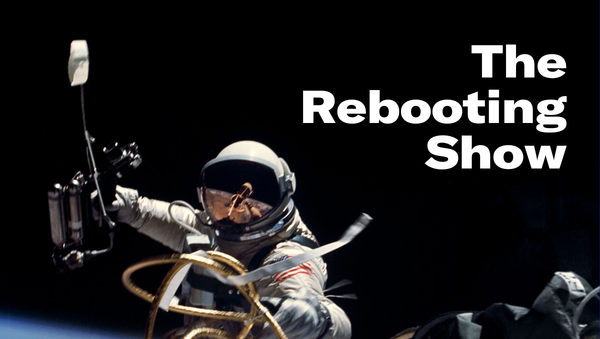Publishing as a sales tool
CB Insights has 800,000 subscribers to its email newsletter but isn't interested in selling ads
Quick request: Please take this 10-question audience survey that will help me better understand the makeup of The Rebooting’s readership in order to grow it as a sustainable business. I’ve already gotten many useful insights from the first wave of responses. Thanks to all who took the time.
This week, I spoke to Anand Sanwal, CEO of CB Insights, about how it uses its popular email newsletter as a customer acquisition tool for a software business. Also: Where Quartz went astray and how access is a subscriptions driver.

More companies than ever are intrigued by building their own publishing arms, seeing an opportunity to lower customer acquisition and marketing costs. After all, in an age of “going direct,” why should companies not build media arms?
As was once said to me about communism, great on paper, messy in reality. Time and again, companies have talked a big game about building their own media arms only for the initiatives to peter out, flame out or just languish. The latest cautionary tale comes from Netflix, which drastically cut staff last week at its ambitious (relatively speaking) publishing site, Tudum, which only debuted in December 2021.
The cuts come six weeks after Netflix CMO Bozoma St. John departed the company – and at a time when Netflix is shockingly talking about reining in spending as subscriber growth hits a wall and goes in reverse. But in truth, Tudum was likely doomed from the start, despite hiring top-flight talent and promising them editorial freedom with tech company pay. One media exec responded to my text of the news of its demise this way: “Who needs this?”
That’s a basic media question that marketers often don’t ask. And most of these forays into brand publishing come out of marketing departments. Finding recaps and cultural takes on TV programming is not hard. Sure, you can personalize Tudum with your Netflix credentials. That’s not a ton of added value.
Publishing can be very useful for subscription services as both a customer acquisition tool and marketing vehicle. On this week’s episode of The Rebooting Show, I spoke to Anand Sanwal, CEO of CB Insights, which uses its 800,000-subscriber daily email list in order to fuel a high-priced data subscription service that often goes for $60,000 per year. What CB Insights has learned:
- Be realistic. CB Insights doesn’t claim it wants to take down The Wall Street Journal. It isn’t trying to build out a massive newsroom. (Anand says it has “0.5” employees devoted to it.) Instead, its goal is clearly to introduce people to the CB Insights brand and give them a taste of what its private-company data insights. Compare that with Coinbase claiming it was going to “combat misinformation” only to publish a handful of articles and move on.
- Have a voice. CB Insights takes an irreverent tone in its email, one that Anand admits is sometimes jarring to potential clients used to the dull-as-dishwater world of software communications. But normal people no longer divide content into neat buckets with a different level of expectation for business content.
- Have an angle. Access to unique datasets is a clear differentiator. CB Insights uses its data on private tech companies to find new angles, even to the most regurgitated stories like Elon Musk buying Twitter.
- Understand your CAC. Devoting resources to building a must-read newsletter isn’t cheap, but it makes a lot of sense when you have a high-priced subscription. You don’t need to convert as many people. That’s one reason why CB Insights doesn’t run ads on its newsletter.
Check out the full podcast on Apple or Spotify. Thanks to House of Kaizen for its support as presenting sponsor.


House of Kaizen’s 20 years of growth optimization for subscription products has given them the unique ability to identify the common markers of the strongest subscription product businesses, and share them with you as your partners. Its Subscription Growth Diagnostic very quickly identifies where and how to tackle the low hanging fruit or the more meaty efforts to achieve the next phase of your growth goals.
House of Kaizen’s decades of subscription product experience in publishing, streaming, software, wellness and retail runs the gamut of subscriber experiences with best practices, research and testing methods to get you where you want to be, faster with more confidence and efficiency. They’ll work alongside your team to discover, ideate and execute experiments for sustainable subscription revenue growth.
Find out why publishers like Newsday and WWD work with House of Kaizen.

A new chapter at Quartz (again)
Quartz has long been a publisher that was easy to root for. Since The Atlantic launched it in 2012, Quartz admirably experimented in both its audience and advertiser products. But with its sale to G/O Media – the third time Quartz has changed hands in four years – Quartz is highly unlikely to fulfill the lofty expectations it once had as a legitimate challenger to global business publications like The Economist. Some lessons:
- Nail the timing. Quartz launched with a native-ad model at the tail end of the frenzy for custom ad solutions. The premise was to allow unfettered access with high-priced ads that aren’t part of the programmatic world. The ad market today is far different.
- Avoid the middle. The shifting landscape meant Quartz could never grow in impact to be sufficiently premium to make up for its lack of scale. It ended up in a no man’s land where it wasn’t niche and essential enough for B2B ads and subscriptions but not big enough for broad-reach brand and performance advertising.
- Don’t get too cute. The publisher often used the word “Quartzy” to describe its sometimes esoteric projects like doing away with a homepage and rolling out a chatbot. In retrospect, Quartz was very early to the power of email, building a great email product before email was the belle of the ball. Sometimes you don’t need to overthink the product.

Paying for access
Paywalls are not the only way to generate direct reader revenue. Many times, I feel like they’re used out of laziness – and a healthy dose of misunderstanding the motivations of their audiences. Everyone likes to believe what they do is essential. The truth is, few publications rise to that level on the strength of their content alone.
But what publishers can offer more often than not is status and access. Web3 projects have shown how people gladly pay for both. The new Vogue Club is an interesting subscription product that revolves around access. For $250 a year, members get early access to Vogue features, the ability to connect directly with Vogue editors and entrée to virtual and in-person events. I believe we’ll see more efforts along these lines than simply fencing off articles and waiting for the Stripe receipts to pour in.

Remembering Sean Finnegan
I was shocked to hear the news of Sean Finnegan passing away. Reading the many remembrances of Sean, I’m reminded that how you treat people is generally how all of us will be remembered. Like most people who knew Sean, I knew him as a great guy, always the center of attention and unfailingly thoughtful and kind. Any panel I moderated with Sean on it, I’d make a joke about how he owned the biggest minivan in the Midwest because he had seven children. He even didn’t mind – or didn’t tell me he minded – when I published a photo of him wearing a full suit in a yacht hot tub in Cannes. Sean accomplished so much in his work, but even more so, he had a real impact on so many people on a human level. He’ll be missed.

Recommendations
DALL-E 2 is worth tracking as an example of the flattening of creation tools that’s erasing many of the costly signals used by publishers to portray themselves as premium. Some of the early examples of AI-generated illustrations are impressive.
Digital advertising hung its hat on the ability to do one-to-one targeting, and that’s now changing. No surprise then that analog media could benefit.
Barstool is testing the elasticity of its brand, rolling out a grooming line that includes beard oil and body wash. Watch out, Axe.
Semafor is starting to come together. Dylan Byers has the details on the expectations of a $25 million-plus funding round and launch with 30 staffers in Washington DC and a yet-to-be-determined second hub, likely abroad and I would guess in Asia, so Singapore.
Being a CEO now means deciding just how political to get, as companies face pressure from their employees to take stands on a myriad of social issues that often don’t directly impact their businesses. The leaked Supreme Court decision to overturn Roe vs Wade will make this all the messier. Will companies boycott events in New Orleans if Louisiana outlaws abortion?
Paywalls incentivize all kinds of dark patterns, including the dreaded call-to-cancel hustle embarrassingly used by major brands. Perhaps a way out is some version of “tokenized media” that transfers control more clearly on the side of the user.

Thanks for reading. One more request: Please take The Rebooting audience survey. Appreciate it. For feedback, email me at bmorrissey@gmail.com or by hitting reply to this email. For sponsorship inquiries, check out the sales kit and get in touch.




